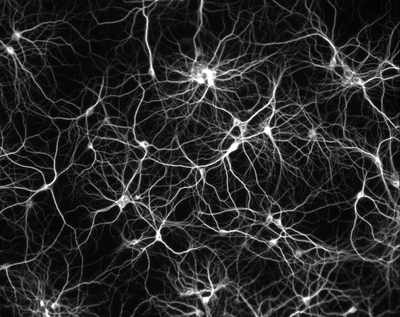One essential element to any successful endeavor is the ability to think right. There are many spiritual and religious systems and they differ on many things, but one thing they all stress, is the importance of thinking the right thoughts. The biggest problem we have in our life is to choose the right thoughts. But how do we do that? It is estimated that we have 40 000 thoughts during one day. That is one thought every second second! Thoughts arise naturally by themselves. How can we possibly control that process? There are some things that we can do.
-
Actions and thoughts go together. By doing the right actions, which is under our control, we influence what thoughts arise. Act as if you were enthusiastic might give you enthusiastic thoughts.
-
By reading good (self development, biographies, etc) books, we influence heavily our thoughts. The same goes for listening to inspirational people. But the process is not permanent, so we must keep on reading each day and listen ever so often to enthusiastic people.
-
By meditating, we get aware of our thoughts before they take control of us, thus we can influence them.
-
Sometimes the change of the environment can influence our thoughts.
There are also some things we should avoid.
-
Talking to negative people, who are complaining about everything and everybody.
-
Listening or reading the news. News are gossip or/and manipulation of your mind and your thoughts. They are almost always negative. Avoid them at any cost.
-
Giving in to depressing thoughts. As soon as you are aware of depressing thoughts make a list of 10 things you can do to go into real depression. Then do the opposite.
My favorite way to lift my thoughts, is to read (or listen to) inspirational self development books. I devote 30 to 60 minutes each day to this reading, and that time is well invested. A day when I read such a book, I accomplish much more, then the day when I do not. And my thoughts are much more hopeful and enthusiastic. Here are some books (in order of their importance) that I use 
Olson, The Slight Edge
Suzuki, Nurtured by Love
Brande, Wake up and Live
Rogers, Fighting to win
Bettger, How I raised myself from failure to success in selling
Bettger, How I multiplied my income and happiness in selling
Carnegie, How to stop worrying and start living
Chandler, The Story of You
Chandler,100 Ways To Motivate Yourself
Chandler,Reinventing Yourself
Chandler,17 Lies That Are Holding You Back
Chandler,Ten Commitments To Your Success
Tolle, The power of now
Gallwey, Inner game of tennis
Thoreau, Walden
Gandhi, The Story of My Experiments With Truth
Ferris, The 4-Hour work Week
Bhagavad Gita
Jesus, Sermon on the Mount
Tao Te Ching
Buddha, Dhammapada
Allen, As a Man Thinketh
Ellis, The Magic Lamp
Pressfield, War of Art
Getting Real: The book by 37signals
We are all different. I do not suggest that my list of books will suit you, but it is a good idea to have a list of books that inspire you and get your juices going. And to keep looking out for books that you can add to your list.



 ). The doing (that is giving meaning) is done by our brain.
). The doing (that is giving meaning) is done by our brain.

